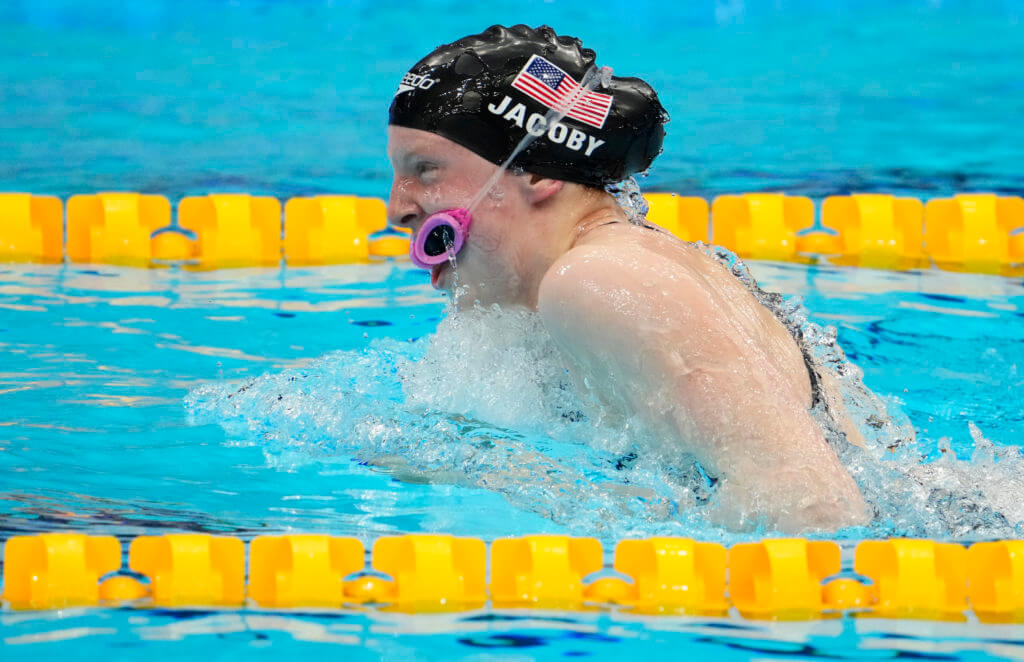Examples of Resilience From the Olympic Games

Examples of Resilience From the Olympic Games
By Rachel Sansano, Swimming World College Intern
During the Olympic Games in Tokyo, the United States won an impressive 30 medals, 11 of which were gold. It was a strong showing for the American squad, which was followed by Australia (20) and Great Britain (eight) in the medals count. However, even though the Team USA athletes had a strong showing, it is important to remember that the swimmers are not just athletes, but humans too.
No one has a perfect race every time they step on the blocks. This simply isn’t possible. Sometimes, things don’t turn out the way you’d hoped. After a bad race or a mistake, it can be difficult to bounce back immediately.
At the 2020 Games, Team USA showed us just how important it is to be able to brush things off and move on to the next race. All athletes have to be resilient. Throughout any swimmer’s career, obstacles will be put in their way. It is the athlete’s job to figure out how to move past each and every one. This is what separates the good from the great.
Here are a few examples of how the U.S. Olympic swimmers overcame barriers in their paths.
Lydia Jacoby
Olympic champion and 17-year-old Lydia Jacoby was the breaststroke leg of the U.S. mixed 400 medley relay. During this race, Jacoby lived every swimmer’s worst nightmare. As soon as she hit the water, her goggles slipped down and got caught in her mouth. Every swimmer can relate to Jacoby losing her goggles. It’s happened to the best of us, no matter how hard we smash our goggles into our eye sockets before we step up to race.
Jacoby showed all swimmers that sometimes things happen that are out of your control, and fought through the mishap with a 1:05-flat split. You cannot control everything. You can only control your response. Jacoby’s response set a great example of focus and mental toughness.
Michael Andrew
Michael Andrew had a lot of pressure on his shoulders going into his first Olympic Games and fought through a few bumps along the way. In the final of the 200 individual medley, Andrew was leading by more than a second when the swimmers hit the last turn. During the last 50 of his race, Andrew struggled and fell back to fifth place. Every swimmer knows this horrible feeling. One second, you’re leading the pack. The next, you are struggling to keep up.
Andrew quickly brushed off what transpired. In his last race of the Tokyo Games, Andrew supplied a strong breaststroke leg and helped the United States win gold and set a world record in the 400 medley relay.
Andrew is an example of an Olympian that didn’t give up after things didn’t go his way. He proved his mental toughness and showed the resiliency of a true Olympian.
Katie Ledecky
For a long time, Katie Ledecky was thought to be unbeatable. But, every Olympian is human. In the 400 freestyle, Ledecky was leading at the 300-meter mark. At the 2016 Rio games, she crushed this event, winning by almost five seconds. This time however, Australian Ariarne Titmus had other plans. When the swimmers hit the wall, Ledecky was in second place, edged by .67 seconds.
Even though this result is not what Ledecky was looking for, she didn’t let it linger. Two days later, Ledecky won gold in the 1500 freestyle. She kept her winning streak going when she added another gold to her collection in the 800 freestyle. This recovery is a great example of how an Olympian responds to disappointment and adversity. Instead of letting the past control her thoughts, she focused on the next race and kept herself moving forward.
Conclusion
These are just three examples of resilience from the Olympics. These athletes performed on the biggest stage in the world and stayed in the moment. They didn’t stress about what had happened in the past, and they didn’t focus on what went wrong. They pushed forward. Their examples of resiliency are inspiring to swimmers of all ages.
All commentaries are the opinion of the author and do not necessarily reflect the views of Swimming World Magazine nor its staff.



